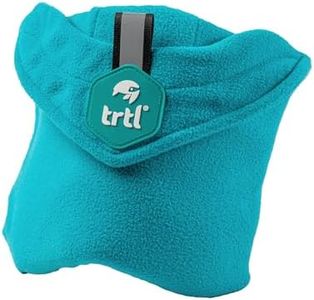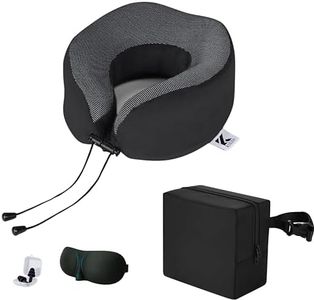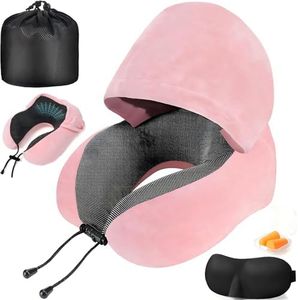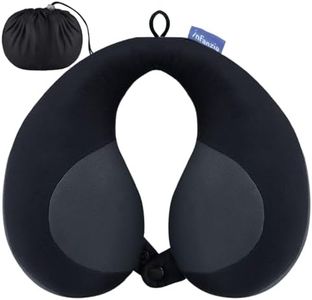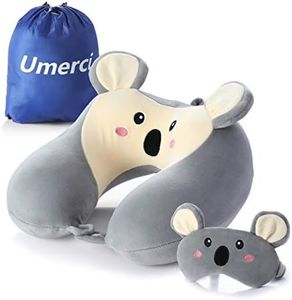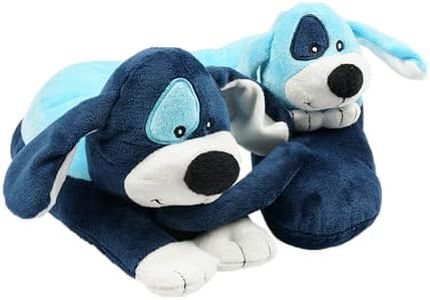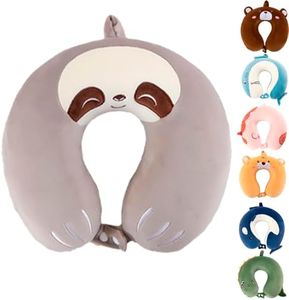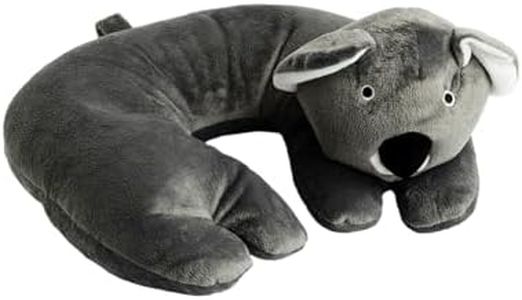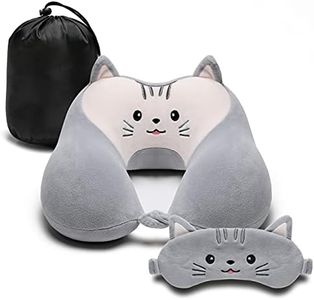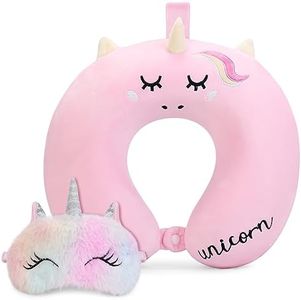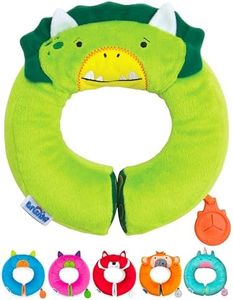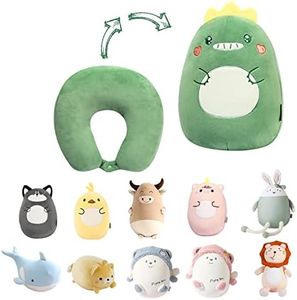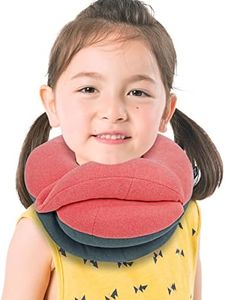We Use CookiesWe use cookies to enhance the security, performance,
functionality and for analytical and promotional activities. By continuing to browse this site you
are agreeing to our privacy policy
10 Best Kids Travel Pillows
From leading brands and best sellers available on the web.By clicking on a link to a third party's website, log data is shared with that third party.
Buying Guide for the Best Kids Travel Pillows
Choosing the best travel pillow for kids is about balancing comfort, support, and ease of use. Children are more sensitive to discomfort during travel, so the right pillow can make journeys by car, plane, or train more enjoyable. It's important to consider both your child’s age and travel habits to match their unique needs, ensuring the pillow is not only cozy but also practical to carry and clean.Pillow ShapePillow shape refers to the design and outline of the travel pillow, such as U-shaped, rectangular, or animal-shaped options. This is important because the shape determines how well it supports your child's neck and head during travel. U-shaped pillows cradle the neck and help prevent it from falling forward, making them ideal for children who nap upright. Rectangular and flat pillows work better if your child reclines or needs a cushion against a window. When choosing, think about how your child most often sleeps or rests during travel — upright napping calls for neck support shapes, while side-sleepers or window leaners might prefer a flatter style.
Filling MaterialFilling material describes what’s inside the pillow, which greatly affects comfort and support. Common options include memory foam, microbeads, standard polyester fiber, and inflatable air. Memory foam provides firm support and molds to the shape of your child's neck, making it good for longer trips. Microbeads and fiber are softer and lighter, great for younger children or occasional use. Inflatable pillows can be adjusted for firmness and are very portable, but may not feel as comfortable as the stuffed types. Consider your child's preference: if they like plush, go for fiber or microbeads; if support is key, memory foam is often best.
Size and FitSize and fit describe how well the pillow matches your child’s body, particularly their neck size and shoulder width. Too large and it won’t support them; too small and it won't be effective. Pillows made specifically for kids are usually a better choice than adult sizes. Check that the pillow hugs their neck gently without pushing up on the head or slipping off easily. For younger children, look for compact designs that suit smaller frames, and for older kids, a slightly larger pillow may be needed to provide proper support.
Fabric CoverThe fabric cover is the material that touches your child’s skin, affecting comfort and durability. Popular options include soft fleece, plush velour, cotton, or synthetic blends. A good cover prevents irritation, doesn’t trap too much heat, and is pleasant for long rests. If your child is sensitive to textures or gets warm easily, choose breathable and soft covers like cotton. If you want easy cleanup, look for removable and machine-washable covers, which are invaluable after spills or if the pillow gets dropped during travel.
Portability and AttachmentPortability and attachment mean how easy the pillow is to carry and whether it can be fastened to luggage or backpacks. Lightweight pillows or those that compress into small travel bags are easier for kids to handle. Some pillows come with snaps or straps to attach directly to luggage, preventing loss and keeping hands free. Think about your child’s independence and your preferred travel style: if they’ll be responsible for their own things, prioritize compact, attachable pillows.
